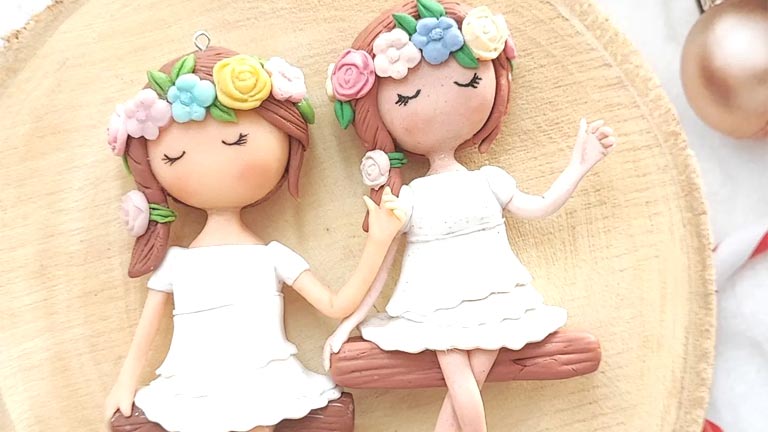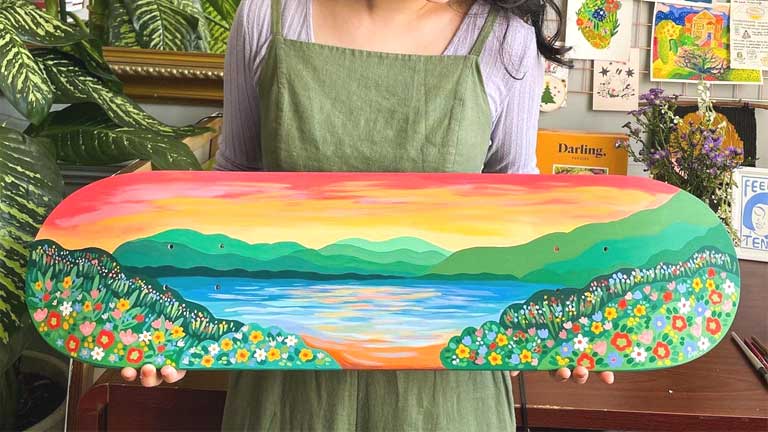
Playing with clay can be calming and revitalizing. The natural soothing textures of clay can draw others to squeeze, pat, and pound it, forming it into what they want. Clay is made up of tiny particles that are water-soluble and oil-insoluble. It is a positive way to express your emotions and a good stress reliever. What if air-dry clay can be used on canvases more often? Air-dry clay hardens and dries naturally, usually within 24 hours, unlike regular clay, needing to be fired in a kiln or heated in an oven. You can’t exactly place a canvas in a kiln or heated oven without running the risk of burning the place down.
How to stick air dry clay to canvas
Yes, air-dry clay can stick to a canvas and before the material hardens, you can mold it into any shape you desire. Create different textures and 3-dimensional content (like geometrical shapes, numbers, symbols, and more). Test if the clay is flexible, but make sure that you do not overwork it; overworking your clay can cause it to be brittle and difficult to work with. Super Glue and hot glue can help you stick air-dry clay to canvas.
Removing Clay From The Canvas:
If you prefer to remove clay from a canvas, use a blower. Why? Clay does not absorb water and sticks to the surface, so a blower forces the clay and water off the surface. Thus, you can paint on the canvas. Be careful to not blow your paint off the canvas or you’ll have to use another canvas.
Another way to remove clay from the canvas is to use baking soda, which you may be hesitant to try. Do you prefer to use another natural degreaser? You can use vinegar, but before you do, know that it may cause damage to the surface of the canvas. Perhaps, you have hydrogen peroxide in your household, which can also be used as a natural degreaser.
There Are Different Types of Clay:
Softer than polymer clay (which is based on polyvinyl chloride that needs to be worked to soften it up and baked to cure), air-dry clay can be used for coiling, sculpting, slab construction, scoring, welding, as well as a potter’s wheel. There are different types of air-dry clay: paper-based (which starts with a clay body, such as terra cotta or earthenware, then adds processed paper), earthen (which is made of a natural clay body containing iron and other minerals from ground soil and the plant and animal life within it), and epoxy two-part mixed base (which comes as a resin and a hardener that must be mixed thoroughly to set and dry properly).
Earthen air-dry clay is suitable for long-term projects and you can soften it by adding water, to continue creatively using it. Whichever air-dry clay you use is your decision. After the clay dries, it can be painted on.
What Else?:
As an artist, you can ultimately create whatever your heart desires, as long as it’s not offensive, but in today’s society, nearly anything can be perceived as offensive. If you decide to paint the sky pink, sometimes, the sky can be pink in reality. If the sky is green, someone may think about chemtrails. Painting a sky green does not mean that you are losing touch with reality, but you’re experimenting or creating from personal experiences. You can paint abstract art instead of realism and if you decide to showcase 3-dimensional work by attaching air-dry clay on a canvas, it is more eye-catching. You just don’t want the painting to fall if you decide to display it on a wall, leading to the risk of part of the piece breaking.
This article is written by Isaiah Joshua Lawrence.




